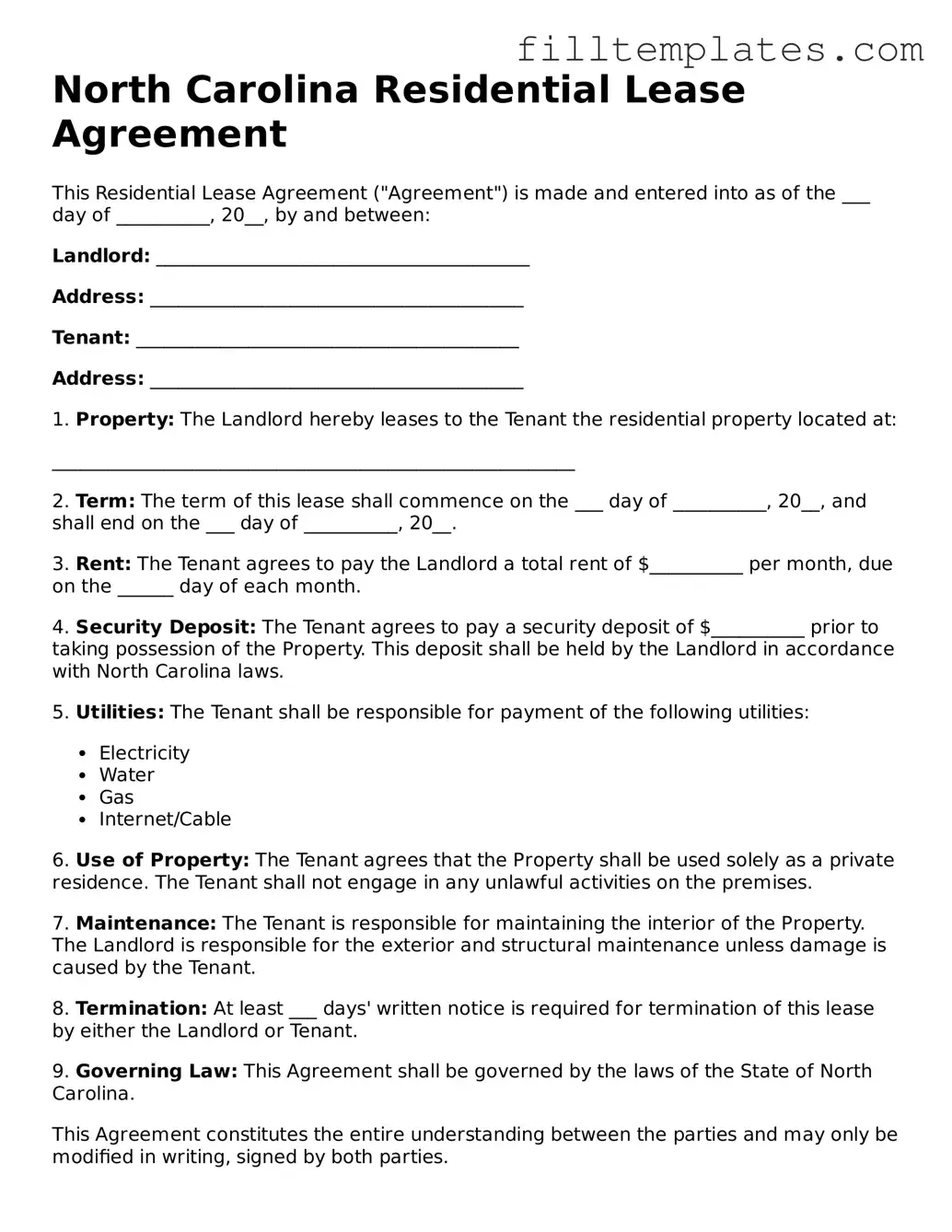North Carolina Residential Lease Agreement
This Residential Lease Agreement ("Agreement") is made and entered into as of the ___ day of __________, 20__, by and between:
Landlord: ________________________________________
Address: ________________________________________
Tenant: _________________________________________
Address: ________________________________________
1. Property: The Landlord hereby leases to the Tenant the residential property located at:
________________________________________________________
2. Term: The term of this lease shall commence on the ___ day of __________, 20__, and shall end on the ___ day of __________, 20__.
3. Rent: The Tenant agrees to pay the Landlord a total rent of $__________ per month, due on the ______ day of each month.
4. Security Deposit: The Tenant agrees to pay a security deposit of $__________ prior to taking possession of the Property. This deposit shall be held by the Landlord in accordance with North Carolina laws.
5. Utilities: The Tenant shall be responsible for payment of the following utilities:
- Electricity
- Water
- Gas
- Internet/Cable
6. Use of Property: The Tenant agrees that the Property shall be used solely as a private residence. The Tenant shall not engage in any unlawful activities on the premises.
7. Maintenance: The Tenant is responsible for maintaining the interior of the Property. The Landlord is responsible for the exterior and structural maintenance unless damage is caused by the Tenant.
8. Termination: At least ___ days' written notice is required for termination of this lease by either the Landlord or Tenant.
9. Governing Law: This Agreement shall be governed by the laws of the State of North Carolina.
This Agreement constitutes the entire understanding between the parties and may only be modified in writing, signed by both parties.
Landlord Signature: _______________________________ Date: ___________
Tenant Signature: ________________________________ Date: ___________
